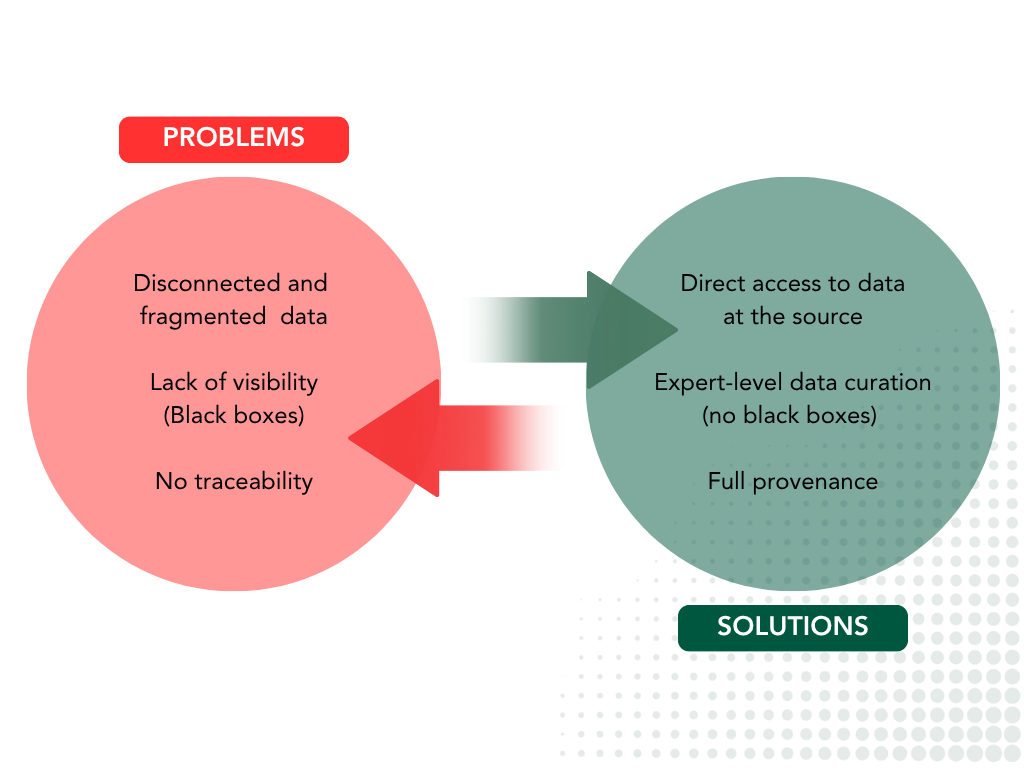Inside the Walls: How Source-Level Access Is Transforming Imaging Research
Executive Summary
Medical imaging data is one of the richest—and most underused—sources of truth in clinical research and AI. Yet researchers keep running into the same familiar walls: limited access, missing metadata, and uncertainty about where the data actually comes from. These gaps slow innovation, reduce trust, and create challenges for regulatory approval.
Source-level access changes that. Instead of copying and shipping data out of health systems, researchers can now work directly inside the walls—connecting securely to imaging archives while keeping the data exactly where it lives. The result is full fidelity, full provenance, and full compliance.
Federated architectures take this idea further. Instead of centralizing data, they enable secure, distributed access while the data stays within each institution’s environment. This approach keeps information in near–real time and aligned with ongoing clinical care, ensuring researchers can train AI models or run analyses on the most current imaging and clinical data—without it ever leaving the health system’s firewall.
Together, these advances redefine what’s possible in imaging research. They create a foundation that’s transparent, secure, and scientifically rigorous—unlocking the true potential of medical imaging across pharma, medtech, and AI.
The Avandra Network Solution
1. Where the Data Comes From: Inside the Health System Walls
Traditionally, imaging data has been gathered through export pipelines: DICOM files are de-identified, stripped of metadata, and shipped to third-party aggregators. While this approach may seem convenient, it often removes critical context. Important acquisition details—like slice thickness, reconstruction kernels, or compression settings—are lost. Linked clinical information, such as pathology reports, treatment history, or outcomes, rarely follows, limiting the usefulness of the data for research and AI development.
Source-level access flips the model. Rather than extracting and moving data, Avandra connects directly to health systems’ VNAs and PACS environments—the systems where imaging data actually resides. Researchers can query and explore datasets securely, in place, while preserving the integrity of the original files, metadata, and clinical linkage.
This approach means the data never leaves the health system’s environment, so security and compliance are built in. For researchers, it delivers high-quality, context-rich datasets that enable more accurate AI models and deeper insights. For health systems, it preserves control over their data while helping advance breakthroughs in diagnostics, therapy development, and precision medicine.
2. No More Black Boxes: Transparency and Trust in Imaging Research
The traditional data ecosystem is often opaque. Researchers receive datasets without knowing where scans originated, what validation steps occurred, or whether files were filtered for quality. This lack of visibility creates what many call a “black box”—an obstacle to both scientific reproducibility and regulatory confidence.
Federated, source-level access eliminates the black box.
Every dataset retains a clear, traceable lineage back to its origin. Each study is validated through a combination of algorithmic checks and human review to ensure accuracy, representativeness, and fidelity. Researchers can see exactly what data they’re working with and why it was selected.
This transparency also simplifies regulatory alignment. With full provenance, it’s possible to document precisely how datasets were assembled, validated, and used—an essential foundation for FDA submissions.
3. Why Source-Level Access Matters for Pharma and AI Innovation
For pharma and biotech, access to real-world imaging data enables faster feasibility assessments, more precise patient stratification, and evidence generation that reflects true clinical practice. Imaging provides measurable endpoints—tumor shrinkage, disease progression, or treatment response—that enrich traditional EHR and claims data.
Real-World Impact
AI Model Validation
Train and validate algorithms on imaging data that remains within health system firewalls.
Access complete acquisition metadata for reproducibility and generalizability.
Ensure ground-truth linkage to pathology and outcomes data for real-world accuracy.
Longitudinal access also means researchers can analyze disease trajectories over time. In Alzheimer’s, for example, serial MRIs allow investigators to visualize subtle changes in brain volume long before cognitive scores shift. In oncology, pairing imaging with linked clinical data enables a more nuanced view of therapeutic response beyond RECIST.
For AI and MedTech innovators, source-level access provides the foundation for developing and validating robust algorithms. High-quality, fully traceable imaging data—complete with acquisition metadata and ground-truth clinical context—enables training models that perform consistently across diverse patient populations.
Because the data never moves, teams can develop within secure, HIPAA-compliant environments, accelerating collaboration without adding risk.
4. The Federated Future of Imaging Research
Federated access is more than a technical model—it’s a mindset shift for the industry. By rethinking how data is accessed, validated, and shared, researchers gain agility without compromising governance.
With this approach, the days of opaque, centralized data exchanges are numbered. Instead, researchers, health systems, and technology partners can collaborate transparently—each retaining control, yet contributing to a larger network of innovation.
Conclusion
The future of imaging research depends on access that is both deeper and more responsible. By going inside the walls, researchers can unlock the full value of imaging data—complete, compliant, and connected to its clinical context.
Avandra’s source-level model delivers precisely that: uncompromised quality, transparent provenance, and the freedom to innovate without risk.
To learn more or explore the Avandra Imaging Network, visit AvandraImaging.com

